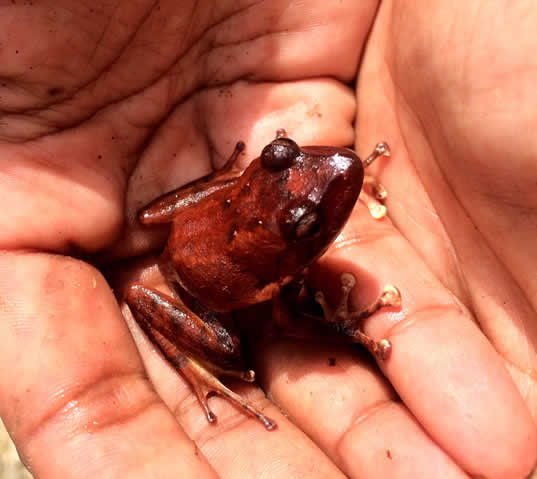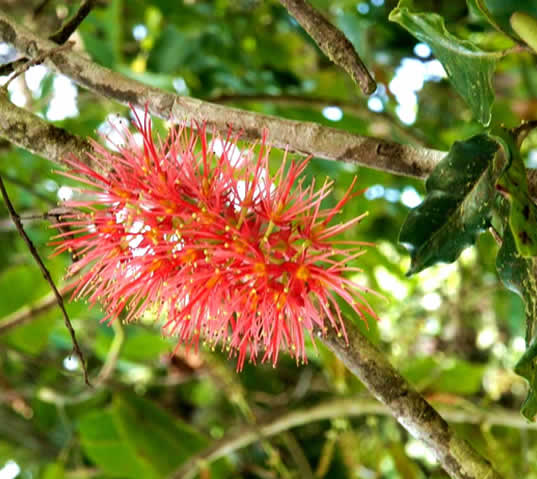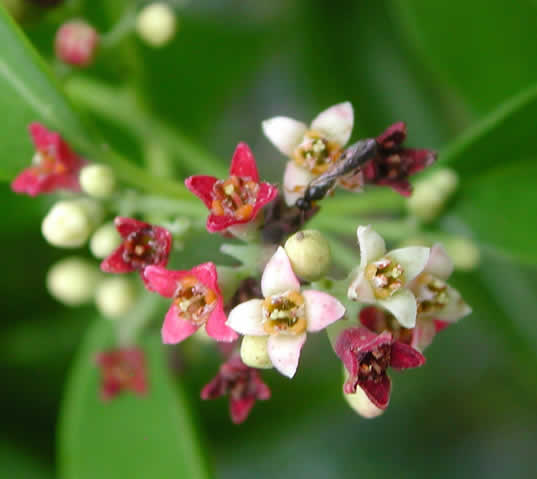
The majestic Fijian sago palm (Metroxylon vitiense) or soga, pronounced songa in Fijian, is an endangered palm unique to Fiji. Soga is approaching critically endangered status with drainage and loss of the largest remaining monospecific stand near Pacific Harbour in 2015/16. Soga is one of only five sago palm species in the world and a wild relative of a major staple food on which millions of humans depend upon for their main food source.
Soga has a highly restricted natural distribution in south-east Viti Levu, and unfortunately in locations favoured for agricultural and tourist development. Soga forest has contracted by more than 95% from its historic natural range. By far the biggest losses have been since the 1970’s with approximately 800 ha of soga swamp forest drained and lost in and around Pacific Harbour for residential, resort and golf course development.
Soga is also threatened by unsustainable harvesting for roofing thatch for traditional styled buildings and bures in the tourism sector. Somewhat surprisingly soga was not a traditional roof thatch in Fiji. Nowadays soga is the most highly regarded thatch lasting more than 5 or 10 years in service, while other types of palm leaf thatch such as coconut and pandanus last from one to four years.
Unlike other species of sago palm, Fijian soga was not utilised for production of starch but there is a cottage industry of harvesting of whole young palm trees for their delicious ‘heart of palm’ or millionaires’ salad. Such destructive harvesting now looms as a major threat to the species in Fiji. In recent years Mr Dick Watling /NatureFiji-MareqetiViti (NFMV) has imported the coppicing peach palm from Hawaii to cater for local demand for ‘heart of palm’. Globally, one of the earliest forms of agriculture is considered the intentional felling of sago palms in western Melanesia to produce mushrooms and edible grubs.
Soga has an unusual life history: individual palms grow for 20-25 years before flowering, fruiting and dying. The inner part of the exquisitely sculptured fruits can be used for vegetable ivory carvings. Soga fruits are also an important food source for the endangered Masked Shining Parrot and Samoan Fruit Bat.
Savurua is dedicated to conserving one of the few remaining pristine native stands of soga. Together with our partners NFMV and Pacific Reforestation (Fiji) we have also replanted a degraded swamp section of the Rewa River, in Naitasiri province, where the species had declined to a few isolated palms and is now committed to extinction due to land use change and habitat destruction.

Savurua Botanical Gardens is a mecca for endemic Fijian forest birds: intact and diverse lowland tropical forest

Most of Fiji’s rich flora and its 476 plant genera have been derived from and are shared with the island of New Guinea and south-east Asia to the west.

Savurua Botanical Gardens is 100% committed to conserving Fijian plant species especially endangered endemic trees.
Are you passionate about creating a greener, lusher Fiji? Donate to our conservation initiatives & help protect Fiji’s indigenous flora, fauna & rainforests. It’s a green ‘thumbs up’ for Fiji!